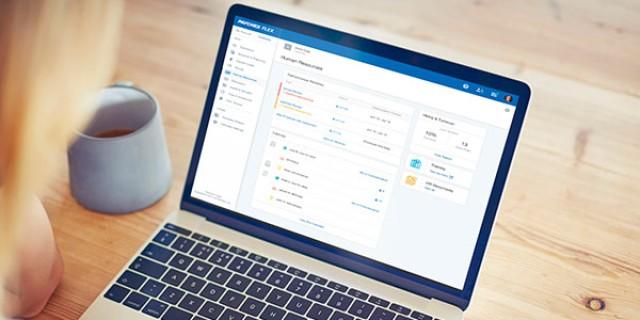- Taxes
- Article
- 6 min. Read
- Last Updated: 04/10/2025
Tariffs: What Should Businesses Know and How Can They Prepare?

Table of Contents
Tariffs. There’s been a lot to absorb the past two weeks after the White House announced a 10 percent tariff on all imports into the United States from any country and then notified a combined nearly 190 countries and territories that there will be additional tariffs placed on their goods before getting to U.S. businesses and consumers.
Days after placing tariffs on a mass number of nations, the president decided to pause the additional tariffs – the 10% still stands – for 90 days on all trading partners that had not place retaliatory tariffs on the United States.
The back-and-forth, on-and off tariff policy has caused nervousness on Wall Street and in the marketplace, and questions abound: Is there an upside after the initial downside? What goods will be most impacted? How will this affect the economy, inflation, and employment? Even the basic – what are tariffs?
What Is a Tariff and Why Would It Be Used?
A tariff is a tax – generally, a percentage of the product’s value – placed on imported goods and services from an exporting country. Simply, a 10% tariff on a product that costs $50 will incur an additional $5 charge for the business importing it.
Tariffs can be used to:
- Raise revenue for the federal government
- Serve as protection for certain U.S. industries and manufacturers
- Be a tool for trade negotiations (e.g., bring other countries to the table or to get them to lower their barriers to trade)
Who Pays Tariffs?
Tariffs are paid to the government by the businesses importing the products. Businesses trying to stay in operation might not want to incur those higher costs on their own. So, the likely next step for businesses is to pass the cost of the tariff on to consumers in the form of increased prices. So, an American-made car whose parts were manufactured in Japan, Mexico, or Canada might now cost thousands of dollars more because of tariffs placed on engines, fuel pumps, and even the nuts, screws, and bolts used in assembling it.
Interestingly, car parts are only ninth on the list of the top 10 commodities in percent change to price level. Businesses dealing with leather goods and clothing/apparel (shoes) could eventually see the two highest increases based on all 2025 tariffs, including the reciprocal tariffs announced April 2, when the pause ends. Industrial crops (hemp), metals (critical minerals), and wool and silk-worm cocoons round out the top five.
Which Major Countries Made the “Extra” Tariff List?
Two weeks into the new administration, additional tariffs were placed on longtime trading partners Canada, Mexico, and China, and since that time the list has expanded to some of the United States’ largest trading partners, based on their share of all U.S. imports.
- European Union: 18.5%
- China: 13.4%
- Japan: 4.5%
- Vietnam: 4.2%
- South Korea: 4%
The top 10 also includes Taiwan, India, the United Kingdom, Switzerland, and Thailand. Only the UK’s (10%) new tariff rate was less than 20%. The other nine trading partners have tariff rates that range from 20% (European Union) to 46% (Vietnam), according to information released by the White House.
Again, the tariffs on goods imported from some of these nations have been paused for 90 days, although Chinese imports face an immediate increased tariff of 125%.
How are Tariffs Impacting Businesses?
Whether the current tariffs in place achieve their intended goals remains to be seen. There has been acquiescence from some nations, including Vietnam offering to zero out its 90% tariffs on U.S. goods (an offer the U.S. rejected), while others have responded with reciprocal tariffs. Canada imposed them on $30 billion in goods imported from the U.S., including steel, aluminum, and more. The EU also has elected to apply retaliatory tariffs on farm produce and products from Republican-controlled states.
There have been reports that some tariffs might even be on ice, as in, felt by the businesses in Canada and the U.S. These companies make and distribute hockey equipment – from skates to sticks – and consumers are feeling pinched by higher prices and sometimes canceled orders. Tariffs might also impact the cost of food and energy, hitting the wallets of employers and employees alike.
At the present time, the degree of impact on the job market remains to be seen. Reports from the U.S. Bureau of Labor Statistics show an increase of 228,000 nonfarm jobs in March, which exceeded expectations. The Paychex Small Business Employment Watch shows job figures from March consistent with the previous several quarters. Economists are keeping an eye on this because the administration’s tariff announcement was made right around the time the reports were released in early April. The reports in April and May might be a better indicator of how much the labor market is being affected.
The U.S. inflation rate in February 2025 was 2.8% and the March rate is 2.4%, according to data released on April 10. Even with the slight decrease, some leading financial experts, including JPMorgan CEO Jamie Dimon, have expressed that inflation could rise with this current tariff approach, sparking fears of a recession.
Employers should keep an eye on the trends in the job market and any economic shifts, continue consulting with their advisers, and be prepared to make changes that suit their business needs.
Tips To Manage the Cost of Tariffs
Moving forward, employers can start to prepare a response to tariffs so that the business can survive and hopefully thrive in this new economic environment. Small business owner and host of the business podcast Paychex THRIVE, Gene Marks, recently wrote about tariffs in the Philadelphia Inquirer, offering approaches that businesses can take to minimize any impact. Here are a few of his suggestions:
- Use free trade zones or bonded warehouses: Employers will not incur the tariff until goods shipped to these places are removed from the premises.
- Work with organizations familiar with trade: Certain organizations, including the Export Import Bank and Small Business Association, provide free consulting on overseas trade.
- Review your supply chains: With the potential for renegotiations to change the landscape, employers potentially can lessen the uncertainty by developing three- to -six-month alternative strategies for goods provided by key vendors.
- Rethink your overhead costs: If employers can reduce or eliminate unnecessary expenses – maybe even invest in technology or manage utilities better – then the money saved can be used to lessen the price increase passed on to consumers.
Help Is Available To Prepare Your Business
Running a business comes with many challenges. Employers already are busy. Adding the task of tracking global trade and tariff negotiations to the daily list might be too time consuming, pulling them away from focusing on running their business. Employers should look to the experts – their CPA, legal counsel, and even the HR Services and solutions offered at Paychex – to provide insights and guidance to support their strategies and growth.
Tags







